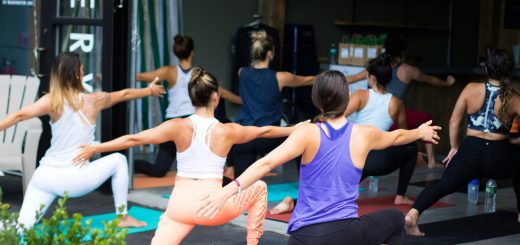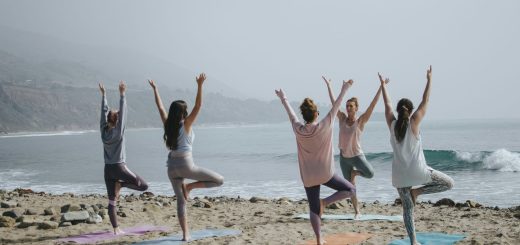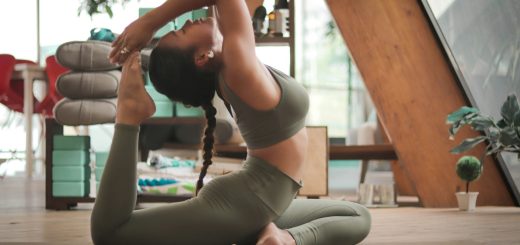Garland Pose Yoga: Embracing Grounding and Flexibility

Before diving in, please note: This post is for informational purposes only. If you’d like to know more about how we approach topics, feel free to check out our friendly Disclaimer Page.
Hey there, amazing readers! 🖐️ Just a quick note: yes, we know there are a lot of ads here. Trust us, we get it—it’s not the prettiest look, but they help us keep this blog alive and kicking. Those pesky little ads cover the costs of all the behind-the-scenes magic, from hosting and tech stuff to creating content we hope you’ll love.
We’re committed to delivering quality posts, and your support (even just sticking around despite the ads) means everything to us. So, bear with us, and thanks for helping us keep the good vibes rolling. Now, on to the fun stuff! 😉
TRANSLATE BUTTON AT THE END OF THE ARTICLE
Overview
Garland Pose Yoga, also known as Malasana in Sanskrit, is a grounding and flexibility-enhancing yoga pose that offers numerous benefits for both the mind and body.
This seated posture resembles the shape of a garland, which is why it is named as such.
Garland Pose is particularly effective in opening up the hips, stretching the lower body, and improving overall flexibility.
Additionally, it helps to cultivate a sense of grounding and stability within the body, promoting a deeper connection with the earth and enhancing overall well-being.
In this article, we will explore the details of Garland Pose Yoga, including its benefits, variations, modifications, proper alignment, precautions, and how it enhances grounding and flexibility.
What is Garland Pose Yoga?
Garland Pose is a deep squatting posture that involves bending the knees deeply while keeping the feet close together.
The practitioner lowers their buttocks towards the floor, allowing the hips to open up and the torso to rest comfortably between the thighs.
The hands can either be joined in prayer position at the center of the chest or extended forward for added balance and stability.
This pose requires flexibility in the hips, ankles, and lower back, making it an excellent exercise for increasing mobility in these areas.
Benefits of Garland Pose Yoga
Garland Pose offers a myriad of benefits for the mind, body, and spirit.
Here are some of the key advantages of incorporating this pose into your yoga practice:
Hip opener: Garland Pose deeply stretches the hips, groins, and thighs, releasing tension and tightness in these areas.
This can help alleviate hip pain and discomfort and improve overall hip mobility.
Improved flexibility: Regular practice of Garland Pose gradually increases flexibility in the ankles, hips, and lower back.
This increased flexibility can enhance other yoga poses and improve overall range of motion in daily activities.
Increased lower body strength: By holding the squat position, Garland Pose strengthens the muscles of the legs, including the quadriceps, hamstrings, and glutes.
It also engages the core muscles, contributing to improved stability and balance.
Digestive health: The compression of the abdomen in Garland Pose stimulates the digestive organs, promoting healthy digestion and relieving symptoms of bloating and constipation.
Energy activation: This pose activates the Muladhara (root) chakra, located at the base of the spine, which is associated with grounding, stability, and a sense of security.
Activating this chakra can help restore balance and boost energy levels.
Mind-body connection: The deep grounding aspect of Garland Pose helps to connect the mind and body, enhancing body awareness and promoting a sense of calm and focus.
How to Perform Garland Pose
To perform Garland Pose, follow these step-by-step instructions:
Start by standing with your feet slightly wider than hip-width apart.
Slowly bend your knees and lower your buttocks towards the floor, coming into a squatting position.
Keep your heels on the ground if possible.
Bring your palms together in prayer position at the center of your chest.
Alternatively, you can extend your arms forward for balance.
Gently press your elbows against the inner thighs, opening up the hips further.
Lengthen your spine and lift your chest, maintaining a straight back.
Stay in this position for 30 seconds to a minute, breathing deeply and evenly.
To release, slowly straighten your legs and stand up.
Modifications and Variations of Garland Pose
Garland Pose can be modified and adjusted to accommodate different levels of flexibility and comfort.
Here are a few modifications and variations that you can explore:
Using props: If you are unable to keep your heels on the ground, you can place a folded blanket or a yoga block under your heels for support.
Using a bolster: For individuals with limited hip flexibility, placing a bolster or a folded blanket under your buttocks can provide added support and make the pose more accessible.
Wall-supported variation: If balance is a challenge, you can perform Garland Pose with your back against a wall for added stability.
This variation can be helpful for beginners or those recovering from injuries.
Dynamic variation: Instead of holding the pose statically, you can perform dynamic movements by gently rocking back and forth, allowing the hips to open up gradually.
Bound variation: For advanced practitioners, you can explore binding the arms by wrapping them around the legs from behind.
This variation provides an additional stretch for the shoulders and upper back.
Tips for Proper Alignment in Garland Pose
Proper alignment is crucial to maximize the benefits of Garland Pose and prevent any strain or injury.
Here are some tips to ensure proper alignment:
Maintain a straight spine: Focus on lengthening your spine and keeping it straight throughout the pose.
Avoid rounding or hunching the back.
Engage the core: To support the lower back and stabilize the pose, engage your core muscles by gently drawing the navel towards the spine.
Keep the knees in line with the toes: Ensure that your knees are pointing in the same direction as your toes and avoid letting them collapse inward.
Open up the chest: Lift your chest and gently squeeze the shoulder blades together to open up the chest and maintain a proud posture.
Relax the shoulders: Avoid tensing the shoulders and allow them to soften and relax away from the ears.
Breathe deeply: Practice deep and even breathing throughout the pose to enhance relaxation and promote a sense of grounding.
Precautions and Contraindications of Garland Pose
While Garland Pose is generally safe for most individuals, there are a few precautions and contraindications to keep in mind:
Knee or ankle injury: If you have a knee or ankle injury, it is advisable to avoid or modify Garland Pose to prevent further strain or discomfort.
Lower back issues: Individuals with lower back problems, such as herniated discs or sciatica, should approach this pose with caution and seek guidance from a qualified yoga instructor.
Pregnancy: Pregnant individuals should consult their healthcare provider before attempting Garland Pose, as it may not be suitable for everyone and modifications may be necessary.
High blood pressure: If you have high blood pressure, it is advisable to avoid deep squatting poses, including Garland Pose, as they can temporarily increase blood pressure.
Always listen to your body and modify the pose as needed to ensure a safe and comfortable practice.
How Garland Pose Enhances Grounding
Garland Pose is renowned for its grounding and stabilizing qualities.
By bringing the body close to the earth and assuming a low squatting position, this pose fosters a deep sense of connection with the ground.
The activation of the Muladhara (root) chakra, located at the base of the spine, further enhances this grounding effect.
Cultivating grounding through Garland Pose can help individuals feel more centered, stable, and rooted in the present moment.
It promotes a sense of security and stability, allowing one to approach life’s challenges with a greater sense of ease and resilience.
The Role of Flexibility in Garland Pose Yoga
Flexibility plays a significant role in Garland Pose, as it enables practitioners to achieve proper alignment and fully experience the benefits of the pose.
The deep squatting position requires a good range of motion in the hips, ankles, and lower back.
Regular practice of Garland Pose gradually increases flexibility in these areas, making it easier to sink deeper into the pose over time.
Improved flexibility not only enhances the physical benefits of the pose but also encourages a sense of suppleness and fluidity in both the body and mind.
It allows individuals to move with greater ease and grace in their daily lives.
Combining Breathwork with Garland Pose
Breathwork, or pranayama, can be combined with Garland Pose to deepen the practice and enhance its grounding and calming effects.
As you settle into the pose, focus on taking slow, deep breaths, inhaling and exhaling through the nose.
This conscious breathing helps to relax the body, calm the mind, and promote a deeper sense of presence.
You can experiment with different breathing techniques, such as Ujjayi breath (victorious breath) or Nadi Shodhana (alternate nostril breathing), to further enhance the meditative qualities of the pose.
The integration of breathwork with Garland Pose creates a harmonious union of body, breath, and mind.
Incorporating Garland Pose into Your Yoga Practice
Garland Pose can be incorporated into your yoga practice in various ways, depending on your level of experience and personal preferences.
Here are a few suggestions:
Warm-up: Begin your practice with a few rounds of Sun Salutations or other dynamic movements to warm up the body and prepare the hips for the deep squatting position of Garland Pose.
Stand-alone pose: Practice Garland Pose as a stand-alone posture, holding it for several breaths or minutes to experience its full benefits.
Hip-opening sequence: Include Garland Pose as part of a sequence focused on hip-opening poses, such as Pigeon Pose or Butterfly Pose, to further increase flexibility in the hips.
Cool-down: End your practice with Garland Pose to ground and center yourself before moving into relaxation or meditation.
Chair modification: If performing Garland Pose on the floor is challenging, you can modify it by using a chair.
Sit on the edge of a sturdy chair with the feet flat on the ground and the knees bent, mimicking the squatting position.
Remember to listen to your body and modify the pose as needed to suit your individual needs and limitations.
Conclusion: Embrace Grounding and Flexibility with Garland Pose
Garland Pose Yoga offers a powerful combination of grounding and flexibility that can benefit practitioners of all levels.
This deep squatting posture provides a myriad of physical, mental, and energetic benefits, including improved hip mobility, increased lower body strength, enhanced digestion, and a stronger mind-body connection.
By practicing Garland Pose regularly and mindfully, individuals can cultivate a deep sense of grounding, stability, and flexibility, both on and off the mat.
Embrace the beauty of Garland Pose and allow it to guide you towards a greater sense of well-being and harmony.

The Enlightenment Journey is a remarkable collection of writings authored by a distinguished group of experts in the fields of spirituality, new age, and esoteric knowledge.
This anthology features a diverse assembly of well-experienced authors who bring their profound insights and credible perspectives to the forefront.
Each contributor possesses a wealth of knowledge and wisdom, making them authorities in their respective domains.
Together, they offer readers a transformative journey into the realms of spiritual growth, self-discovery, and esoteric enlightenment.
The Enlightenment Journey is a testament to the collective expertise of these luminaries, providing readers with a rich tapestry of ideas and information to illuminate their spiritual path.
Our Diverse Expertise 🌟
While our primary focus is on spirituality and esotericism, we are equally passionate about exploring a wide range of other topics and niches 🌍📚. Our experienced team is dedicated to delivering high-quality, informative content across various subjects ✨.
To ensure we provide the most accurate and valuable insights, we collaborate with trusted experts in their respective domains 🧑🏫👩🏫. This allows us to offer well-rounded perspectives and knowledge to our readers.
Our blog originally focused on spirituality and metaphysics, but we’ve since expanded to cover a wide range of niches. Don’t worry—we continue to publish a lot of articles on spirituality! Frequently visit our blog to explore our diverse content and stay tuned for more insightful reads.






